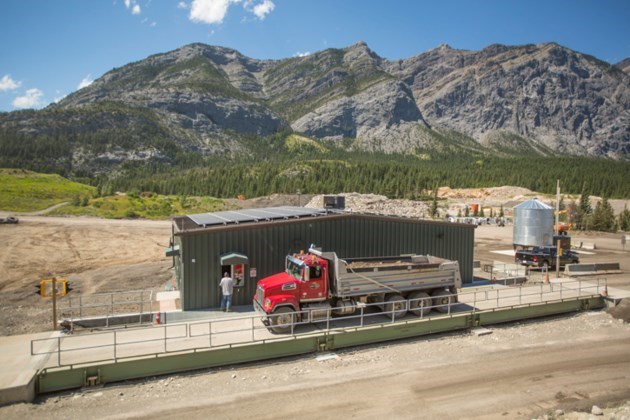BOW VALLEY – Several companies trash have turned into a valley treasure as the Bow Valley Waste Management Commission will be banking more than $1 million surplus for the 2019 fiscal year.
Following a "development-heavy" year in Banff and Canmore, the Francis Cooke Regional Resource Recovery Centre had a noticeable increase in revenue with construction waste tonnage received being some of the highest numbers since 2005-06.
“That sounds good for us, but what you have to remember at the same time is that also means we’re filling up landfill more quickly," said the commission's Chief Administrative Officer Andrew Calder.
"We have limited air space for landfill and we’re working to keep this facility available for the local community as long as possible – it’s a significant benefit to local construction and tourism economy to have a local facility that handles construction and demolition waste without hauling to Calgary."
Operating as a Class III landfill that accepts dry, non-hazardous material, the Francis Cooke Resource Recovery Centre is a not-for-profit self-sufficient regional operation that boasts managing 80 per cent of commercial waste generated by the valley economy.
Thanks to development in Stewart Creek phase three of Three Sisters Mountain Village, the Shop of Canmore project, several hotel renovations and the municipal development in Banff – to name a few – Calder said the development heavy year is what helped the commission see a large surplus.
The commission's 2019 operating budget was approximately $3 million. However, Calder noted the $1 million surplus is not the norm, as last year the commission posted an equally large deficit.
“This doesn’t happen every year," he explained. "In 2018, for example, we recorded an equally large deficit after investing $1.4 million to upgrade the heavy equipment fleet that our dedicated staff use to provide responsible waste management services.”
“The deficit was funded using capital reserves we’ve built up over the years, which highlights the need for us to regularly contribute to capital reserves enabling use to fund the operation sustainability on a long-term basis.”
He said a one-year snapshot does not provide the full picture, as the commission needs to plan three to four decades down the road when it will need to pay for the closure and remediation of the site – a current cost estimated at $4 million.
“We have to make sure we are prepared for that stage of the operation now. Regulation of the waste industry is also changing rapidly, which we are finding typically leads to increased costs,” Calder said.
With the goal to have a surplus covering the significant long-term liabilities and operating responsibilities, he said the extra money will be able to go towards a larger contribution to capital reserves and fund a portion of future expenses.
“One of the Bow Valley Waste’s core commitments is to operate as a financially self-sufficient operation,” Calder said.
“We do that to ensure that our member municipalities don’t have to contribute taxpayer funds each year to fund our operation, as is common with other regional service commissions. The Bow Valley Waste Management Commission operates as a full cost recovery operation.”
In addition to charging for the waste it accepts, the landfill also has product sales of topsoil/compost blend, recycled asphalt, recycled concrete, sand, gravel, landscape rock and wood chips.
On top of being self-sufficient, the landfill also helps the economy and climate.
“It benefits the construction economy greatly and the tourist economy which is so critical to the Bow Valley. I think the [tourism economy] relies on constant renovation, demolition, upgrades to restaurants and hotels and for those industries to have a local facility that handles that waste that is generated through those projects is a significant benefit to them – it keeps costs down and saves a three to four hour round trip to Calgary to go to a landfill there versus being able to drive 15 minutes from Canmore or half an hour from Banff,” he said.
For more information on the regional landfill or to book a site tour, visit bvwaste.ca.







